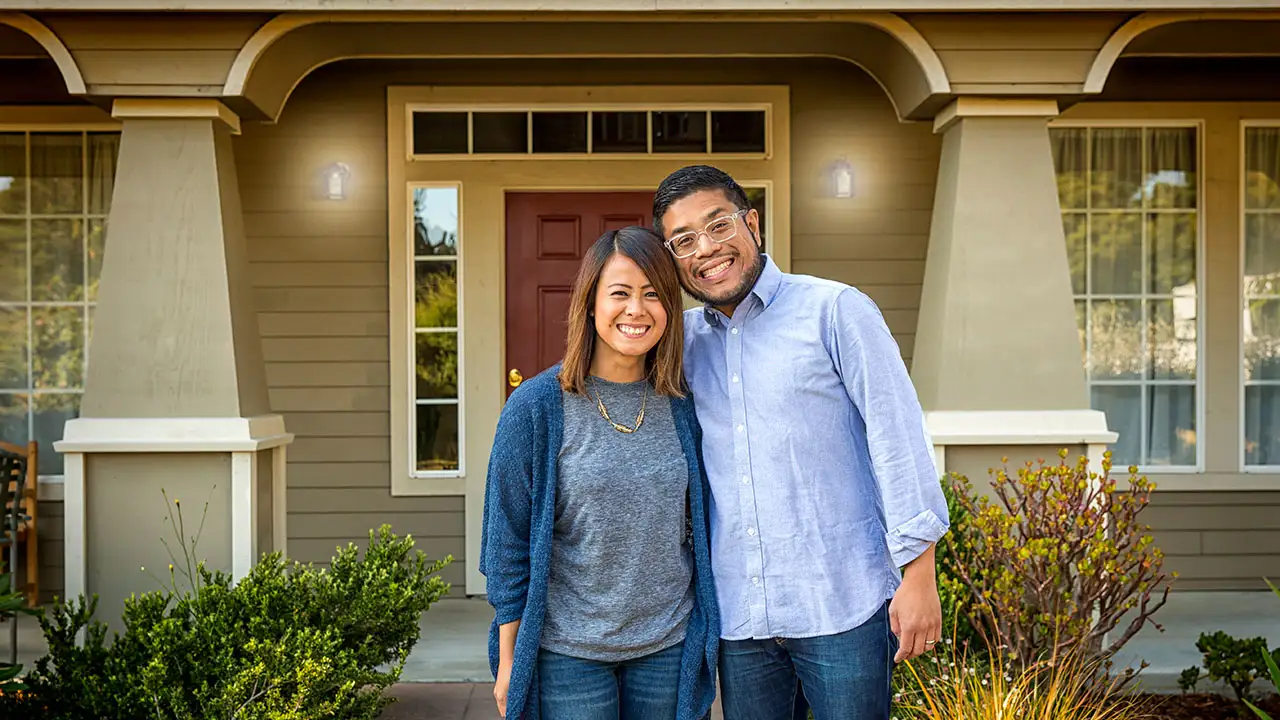
Home Equity Loans
When you want to borrow just enough: Explore the benefits of a $15,000 fixed-rate HELOC
Nov 06, 2024
Written by
Reviewed by
Key takeaways:
A $15,000 fixed-rate HELOC offers flexibility with security—you can borrow only what you need and enjoy predictable rates that won't change over time.
Your borrowing power depends on several factors, including: your available home equity, the lender's loan limit, and their combined loan-to-value (CLTV) ratio requirements.
It’s possible to get a HELOC in as little as 10 days when you prepare key documents in advance.
Find out if you prequalify. It only takes a few minutes.
Not every home improvement project requires a major renovation budget, and not every debt consolidation plan needs six figures to succeed. A smaller HELOC could be the perfect answer when you’re looking for the best way to reach your next financial goal.
Your home holds value beyond the memories you create there. Borrowing against your home equity could be a way to unlock opportunities to enhance your life or your property in meaningful ways. Here’s how you could make a $15,000 HELOC work for you.
What to know about a $15,000 fixed-rate HELOC
First, the basics. A HELOC is a line of credit that allows you to borrow against your home equity. Equity is the difference between your home’s value and the balance you owe on your mortgage.
HELOCs are secured loans. Your home serves as collateral. Collateral lowers the risk for the lender. It’s something valuable that you own and pledge to the lender as a guarantee that you’ll repay the debt. If you don’t repay the debt, you could lose your collateral.
How does a HELOC work?
If you’re approved for a HELOC, when your loan is finalized, you’ll begin the draw period. This is a few years when you could borrow, repay, and borrow more as often as you like, up to your loan limit.
You do need to make payments during the draw period. Some lenders allow you to pay interest only. If you do that, the amount you owe won’t go down. With a home equity loan through Achieve, you’ll make a principal and interest payment payment based on the amount you’ve borrowed.
When the draw period ends, you can’t borrow more. You’ll enter the repayment period. Your monthly payment will be calculated to pay off the loan by the end of your repayment period.
How much can you borrow with a HELOC?
The amount you can borrow with a HELOC depends on factors such as how much home equity you have, the lender’s loan limit, and the lender’s CLTV limit.
HELOC lenders look at how much you still owe on your mortgage, if you have one. This number is added to the amount you want to borrow with the HELOC. Then the lender compares the total to your home’s value.
The result is called the CLTV, or the combined loan-to-value ratio. Each lender decides what maximum CLTV they’ll allow.
Here’s how it works:
If the lender’s maximum CLTV is 80%, it means you can’t owe more than 80% of your home’s value in loans secured by that home. Let’s say your home is worth $300,000 and you owe $100,000 on the mortgage. Eighty percent of your home’s value is $240,000. That’s how much you could owe without going over the lender’s CLTV limit.
Subtracting the $100,000 mortgage balance leaves $140,000 that you could potentially borrow with a HELOC if you have enough equity. You have $200,000 in equity (home value minus mortgage balance), so this is a loan you could apply for.
Home value | $300,000 |
80% CLTV | $240,000 |
Your mortgage balance | $100,000 |
The amount you could borrow | $140,000 |
This table is for informational purposes only. Individual results vary.
Common uses for a $15,000 fixed-rate HELOC
There are so many ways to use a HELOC for all sorts of scenarios.
Debt consolidation
You could use a HELOC to consolidate higher interest debt. Debt consolidation means taking a new loan and using it to pay off more than one debt.
If you have higher-interest debts, like credit cards, a HELOC could help you pay them off more effectively. For one thing, you could reduce multiple monthly payments down to just one. Streamlining your finances could lower your stress and make it easier to manage your money.
Second, you might save on interest. If you qualify for a lower interest rate, you could end up paying less interest overall by the time the debt is paid off. The total amount of interest you pay will depend on how long you take to pay off the debt in addition to the interest rate.
A debt consolidation loan could also give you relief on your monthly budget if the payment is smaller than the total of all the monthly payments you’re making now.
Finally, if your current debts are on credit cards, they probably have variable interest rates. The interest rate could change, and that makes your payments less predictable. A fixed-rate HELOC comes with an interest rate that won’t change.
Other uses for a HELOC
The way you use your loan funds only needs to align with what’s important to you. Here are a few other ways you could put a $15,000 HELOC to good use:
Make small home repairs, like resurfacing cabinet doors and replacing broken windows
Install a home security system
Upgrade old or broken appliances
Cover unexpected medical expenses or elective procedures
Cover moving expenses
Pay for a wedding
How to qualify for a $15,000 fixed-rate HELOC
Each lender sets its own criteria to qualify for a HELOC. Here are the basics:
Minimum credit score requirement
Maximum debt-to-income ratio
Sufficient income
Sufficient home equity
Steps to apply for a $15,000 fixed-rate HELOC
Here’s how to apply for a HELOC:
Gather documents: To help smooth the application process, get all the necessary information before you apply. Some of what you’ll likely need includes proof of your income and employment, your ID, and information about your current home. You may need to provide proof of ownership.
Get prequalified and apply: Get prequalified with a lender who performs a soft credit check that doesn’t ding your score. Once you are happy with the loan your lender says you may qualify for, submit a formal application. When you submit an application, the lender will do a hard credit inquiry on your credit file, and that could temporarily affect your credit score.
Wait for a decision: It doesn’t take too much time to get a HELOC. That’s because after you submit your application, the lender will thoroughly review it. They’ll verify all of the information in your application and check the value of your home. From application to funding could be as little as 10 days, but it could take a few weeks. Being fully prepared before you apply will help you reduce the time it takes.
What to expect after a $15,000 HELOC is approved
If your HELOC loan application is approved, your lender will send you paperwork to sign to officially close on the loan. Then, you’ll work with the lender to get the loan funding you need—in this case, $15,000—during the draw period. Use the money however you need.
As you lower your loan balance by making payments, you have the option of borrowing again, up to your loan limit, as long as you’re still in the draw period.
You might decide that you want to pay off your $15,000 HELOC before the end of the repayment period. If so, just make sure the lender doesn’t charge a prepayment penalty. That’s a fee for paying off your loan early. Achieve’s HELOCs have no prepayment penalties.
What's next
Check your credit: See where you stand credit-wise by looking at your credit reports. If there are any errors, correct them. If there are factors holding your credit score down, like high credit card balances or a history of late payments, focus on improving in those areas. Raising your credit score could help you get better terms on loans in the future.
Estimate your home equity: Find out what your home is worth on a real estate website and compare it to the amount you still owe. The difference is your home equity.
Ask questions: Ask a knowledgeable mortgage advisor any questions you still have. These folks can help you decide whether a $15,000 home equity loan is right for you.
Author Information
Written by
Sarah is a contributing writer for Achieve. She is a financial counselor accredited by the Association for Financial Counseling & Planning Education®, and a writer for other Fortune 500 publications.
Reviewed by
Jill is a personal finance editor at Achieve. For more than 10 years, she has been writing and editing helpful content on everything that touches a person’s finances, from Medicare to retirement plan rollovers to creating a spending budget.
Related Articles
A home equity loan is a way to get cash from your home’s value without selling it. They can have much lower interest rates and affordable monthly payments. Learn more...
Gideon Sandford
Author
A fixed-rate HELOC combines the best traits of HELOCs and home equity loans, but most lenders don’t offer it. Learn how it works and how to get one.
Kimberly Rotter
Author
A home equity loan lets you borrow against the equity in your home with a fixed rate and fixed monthly payments. Learn how a home equity loan works.
Betsalel Cohen
Author
A home equity loan is a way to get cash from your home’s value without selling it. They can have much lower interest rates and affordable monthly payments. Learn more...
Gideon Sandford
Author
A fixed-rate HELOC combines the best traits of HELOCs and home equity loans, but most lenders don’t offer it. Learn how it works and how to get one.
Kimberly Rotter
Author
A home equity loan lets you borrow against the equity in your home with a fixed rate and fixed monthly payments. Learn how a home equity loan works.
Betsalel Cohen
Author


